River cruise offers unique glimpse into Vietnamese, Cambodian cultures
The Arizona Republic — February 18, 2018
PHNOM PENH, Cambodia – “Can you please pass the tarantula?”

Deep-fried tarantula is a Cambodian specialty.
I was joking – sort of – at a restaurant in Phnom Penh, Cambodia’s capital city, after the waiter brought two of the large and hairy deep-fried arachnids to the table following the main course.
At first, I mainly just wanted to photograph the dish popular in rural Cambodia, attractively presented on a serving plate with a lime and spicy dipping sauce. But the rest of our group dared me into taking it a step further.
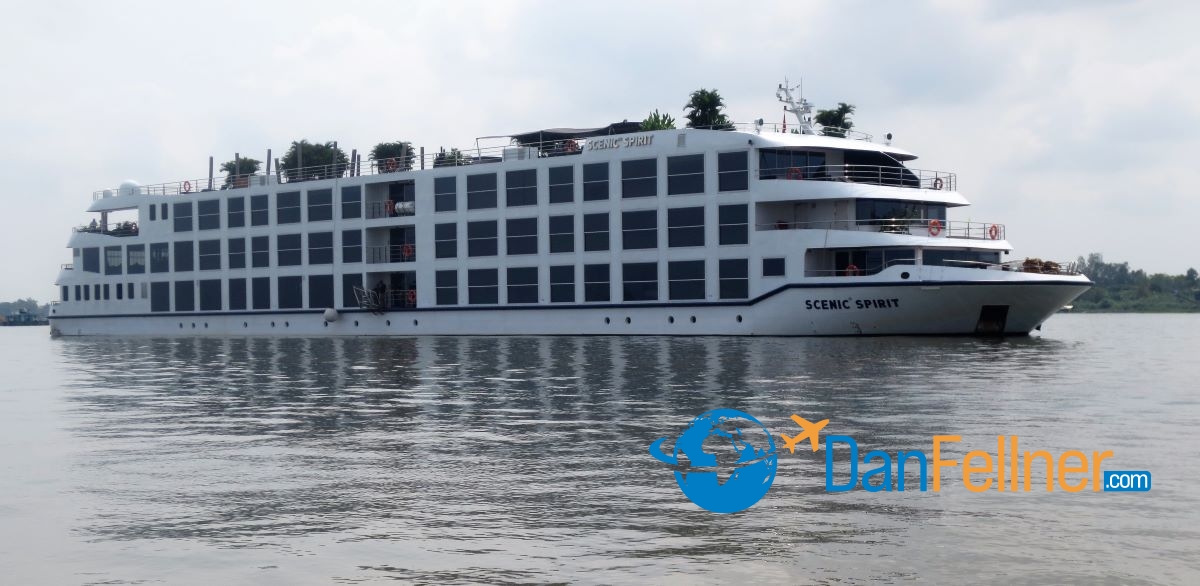
The Scenic Spirit anchored on the Mekong River near Tan Chau, Vietnam.
I bit. Literally. In two bites, I downed the creature – eight legs and all – to the laughter and applause of the group.
Welcome to the Mekong River in Vietnam and Cambodia, which offers an unvarnished and fascinating glimpse into the fabric of an exotic and welcoming culture that has changed little over the centuries.
I recently spent a week cruising the Mekong River in Vietnam and Cambodia aboard the Scenic Spirit, a 2-year-old 68-passenger ship owned by Scenic Cruises, an Australian-owned high-end line with a growing presence in North America. Most of our passengers were from Australia and England; I was one of five Americans on the trip.
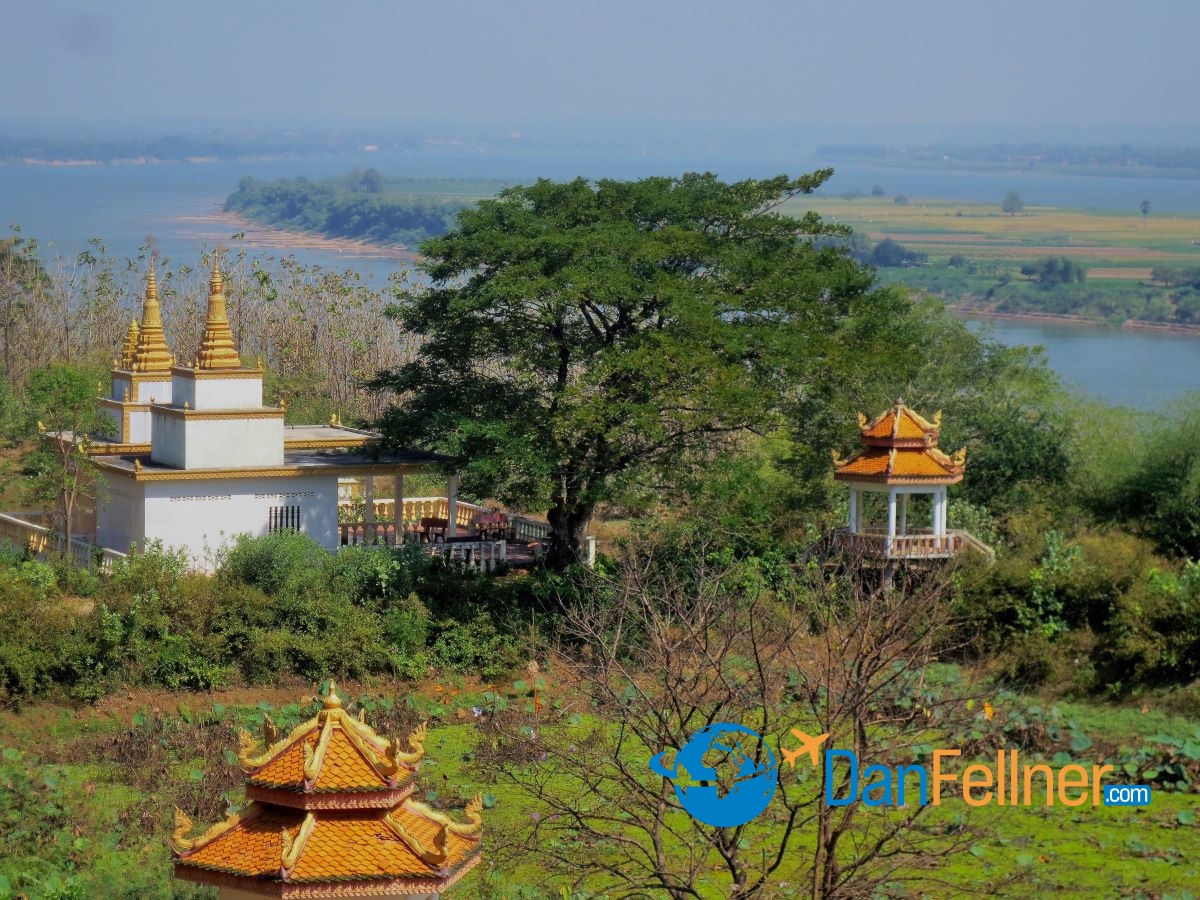
View of the Mekong River from the Wat Hanchey Monastery in Cambodia.
Mekong cruises offer a chance to sail past ancient hilltop pagodas, floating villages and seemingly endless fields of rice, fruit plantations and sugar cane. And you’ll do so in relative solitude compared to cruises on more heralded rivers in Europe like the Danube, Seine and Rhine.
Indeed, during the Vietnam portion of the trip, we didn’t encounter even one other cruise ship, a pleasant difference from river trips in Europe where there are often so many ships parked in port at one time, you need to walk across several other vessels to reach your own.
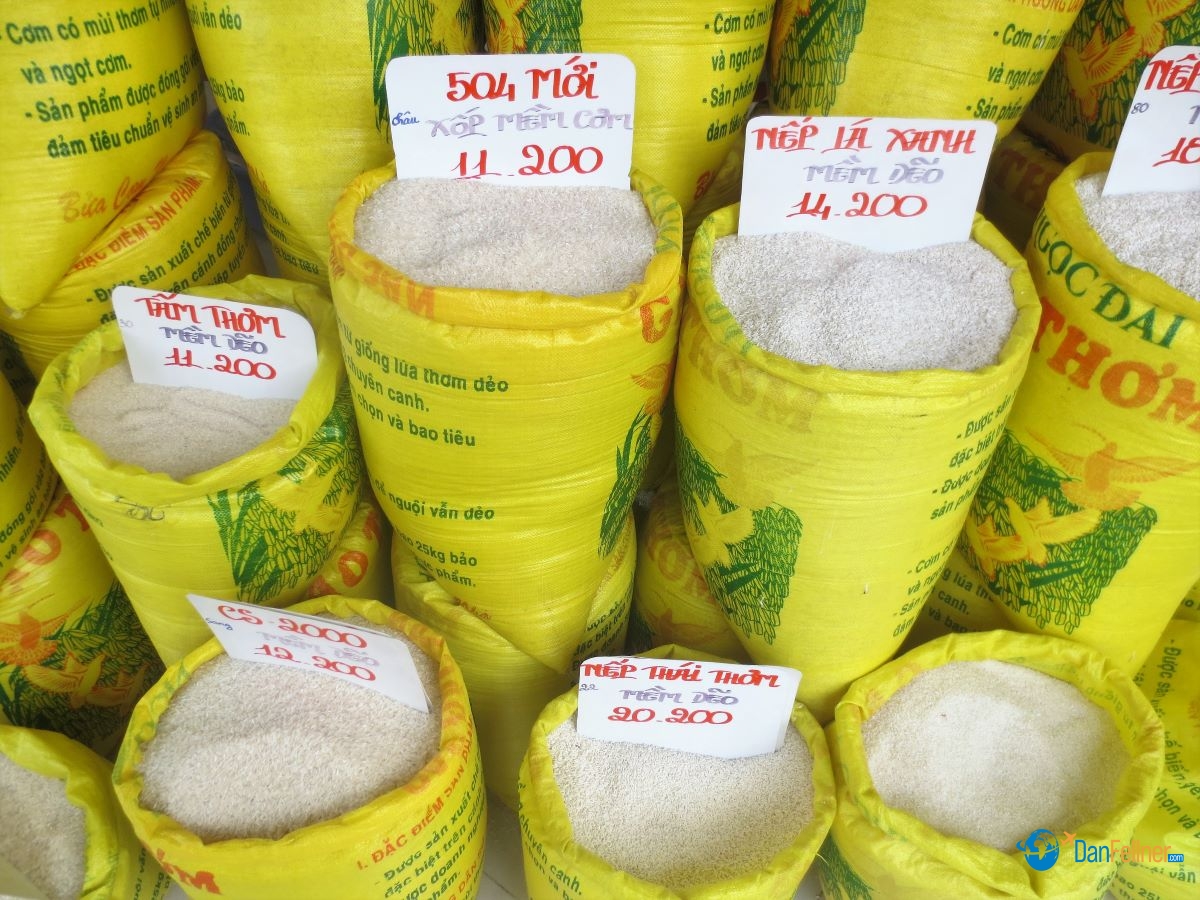
The Mekong region produces hundreds of varieties of rice and is known as Southeast Asia’s “rice bowl.”
Known as Southeast Asia’s “rice bowl,” the Mekong is the lifeblood of hundreds of millions of people in the region, who use the river for trade, transportation, farming and fishing. The river traverses six Asian countries – starting in China’s Tibetan Plateau before meandering through Myanmar, Laos, Thailand, Cambodia and Vietnam, where it empties into the South China Sea.
We leisurely covered about 180 miles over seven days on a small portion of the river, sailing upstream from My Tho, about a two-hour bus ride southwest of Ho Chi Minh City, and disembarked in Kampong Chan, Cambodia. Most of the ship’s passengers also booked post-cruise land tours of Angkor Wat, the world’s largest religious monument, in northwestern Cambodia.
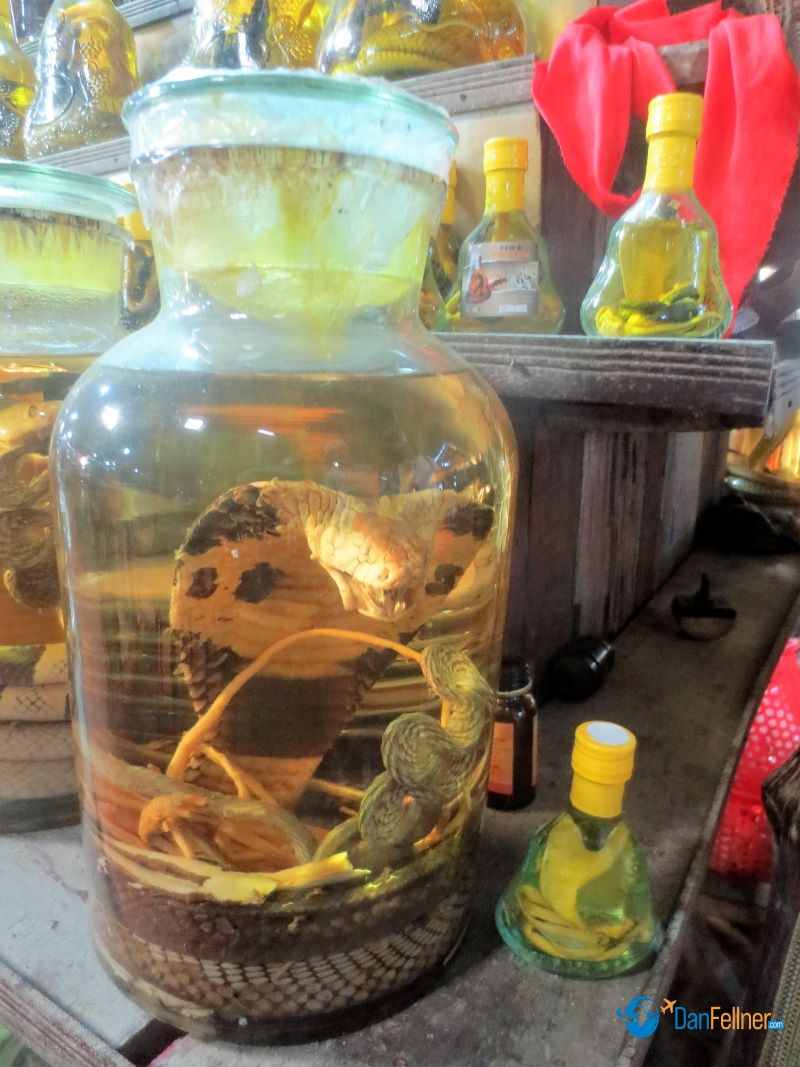
Rice wine infused with a venomous cobra snake sold in rural Vietnam. The Vietnamese believe it to be an aphrodisiac.
Aside from the tarantula, I sampled rice wine infused with a venomous cobra snake (the locals call it “Vietnamese Viagra,”) and a fiery red chile-pepper I picked right off the vine that made a jalapeno from back home taste like a bland cucumber in comparison.
As most of the villages we visited didn’t have docking facilities for large boats, the Scenic Spirit would drop anchor in the Mekong and we would take sampans – long, narrow wooden boats – into towns along the river.
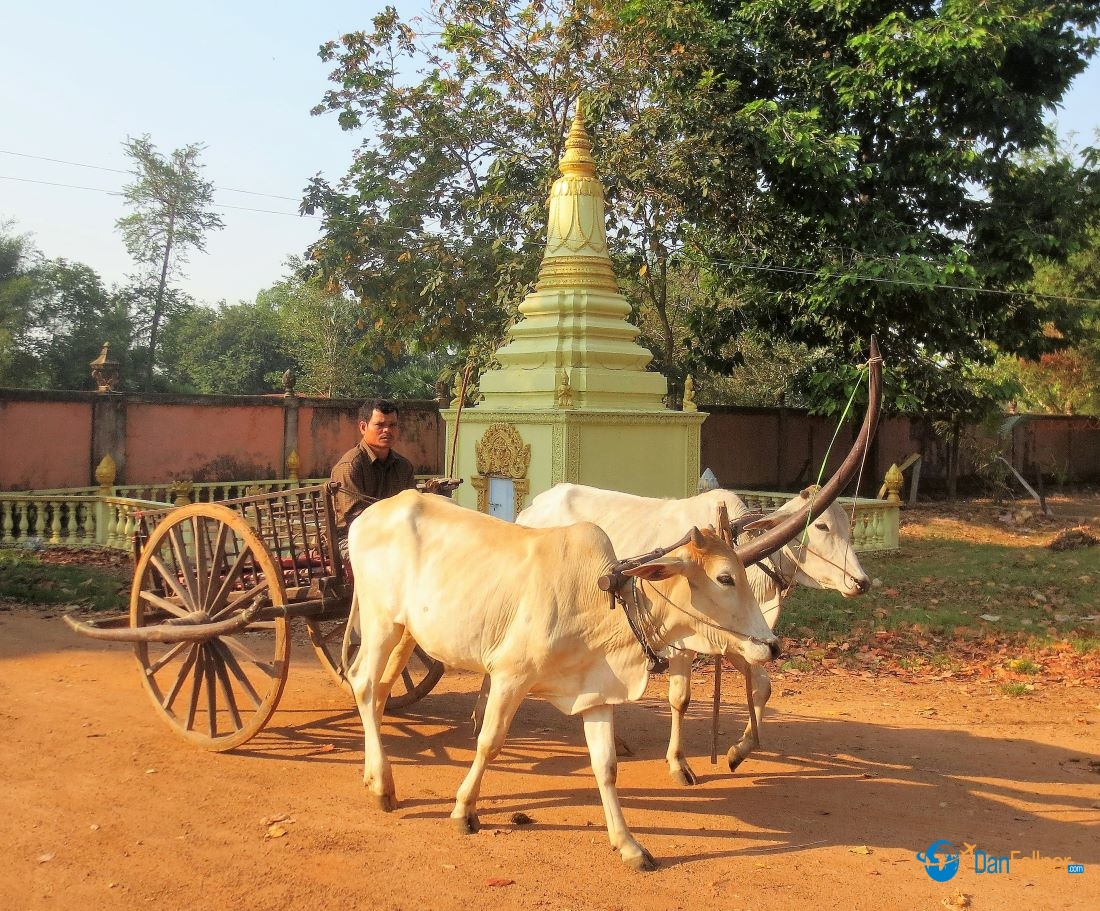
In rural Cambodia, oxcarts are still used as a mode of transport.
Once on land, we rode rickshaws, tuk-tuks and oxcarts to see the sites.
We visited an outdoor market in Sa Dec, Vietnam, where they peddle everything from live roosters to fresh red snapper to roasted rat meat. It’s where the locals go to buy their dinner each day, unlike the touristy floating markets you’ll find in Thailand.
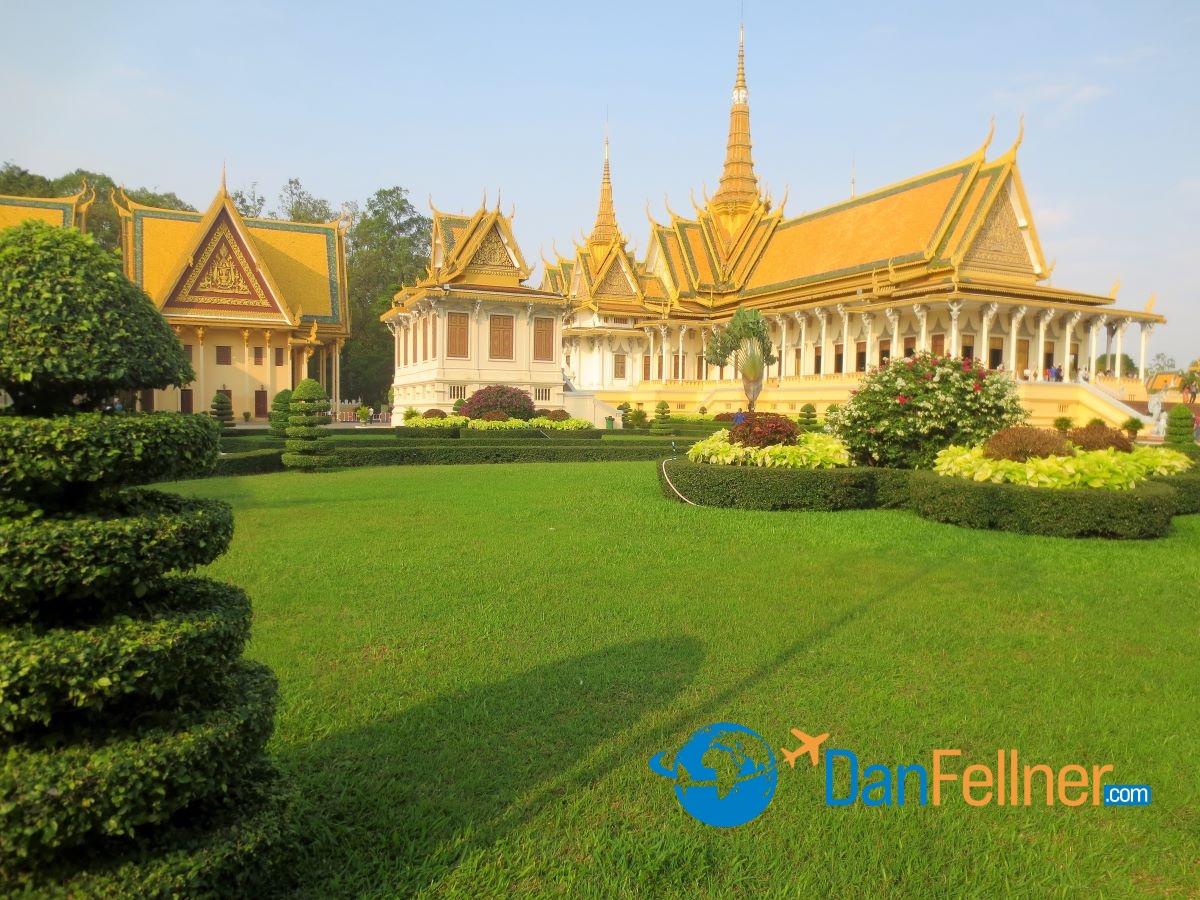
The National Palace, home to Cambodia’s king, in Phonm Penh.
There was a trip to a rural school, a silk factory and the opulent Royal Palace in Phnom Penh, where the country’s 64-year-old King Norodom Sihamoni resides.
I especially found meaningful a visit to the home of a 70-year-old man who had fought in the South Vietnamese army alongside Americans. After the war, he was sent to a “re-education camp.” It was a stark reminder of the region’s tragic past. Despite all they have endured, I have found the Vietnamese some of the friendliest people on the planet, always quick with a smile.
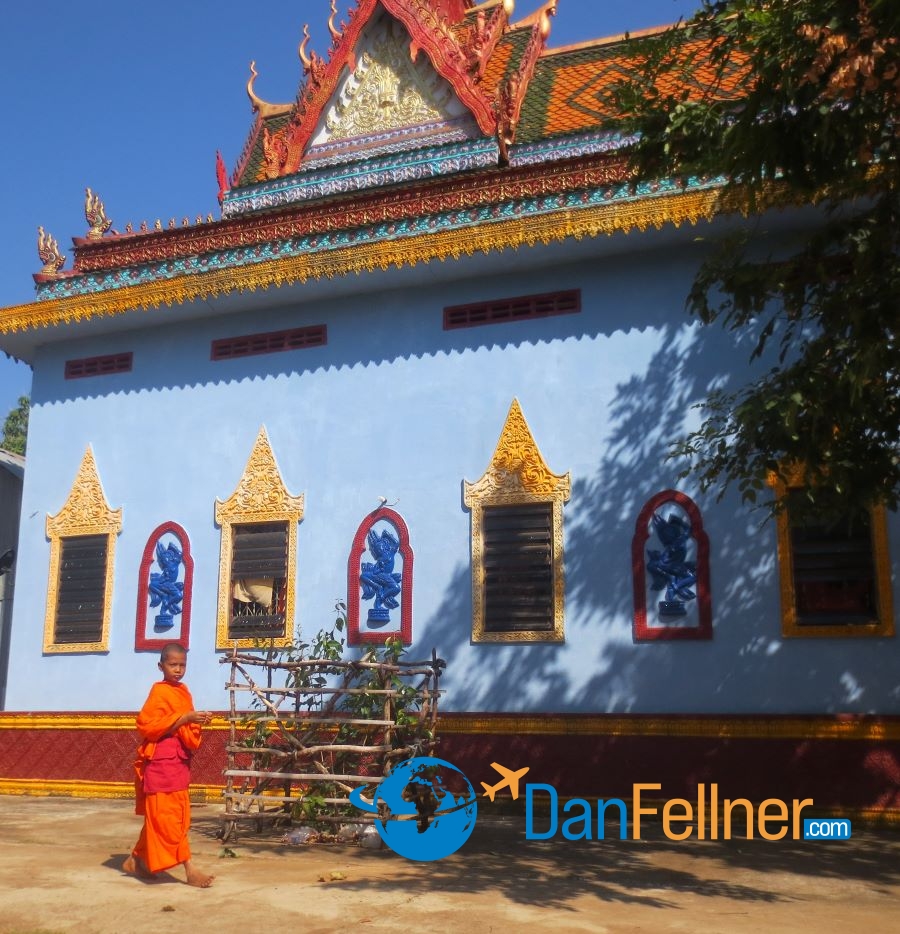
A novice monk at the Wat Hanchey Monastery in Cambodia.
As far as any lingering anti-American sentiment from the war years, we never experienced the slightest hint of it. Duc Ho, one of our Scenic tour directors, says attitudes of the Vietnamese people changed dramatically in 1995 when – thanks in large part to the work of Arizona Sen. John McCain — the two countries re-established diplomatic relations.
“Before, people were really angry toward Americans,” says Duc. “The younger generation now thinks differently. It’s over. It’s history.”

A Vietnamese Lion Dance performed on the top deck of the Scenic Spirit.
While we waited on the Mekong to clear immigration at the Vietnamese-Cambodian border, Scenic brought onboard a local dance troupe, which performed a traditional acrobatic Vietnamese lion dance. It’s believed the dance brings good luck and fortune, not to mention a chance for the ship’s passengers to admire some delightfully animated costumes (see video shot by the author: Vietnamese lion dance).
At Phnom Penh, we veered off the Mekong to the Tonle Sap River to visit Oudong, the former capital of Cambodia and home to the country’s largest monastery. Cambodia is a devoutly Buddhist country and it was fascinating to learn about the lives of the hundreds of monks and nuns who live in Oudong.
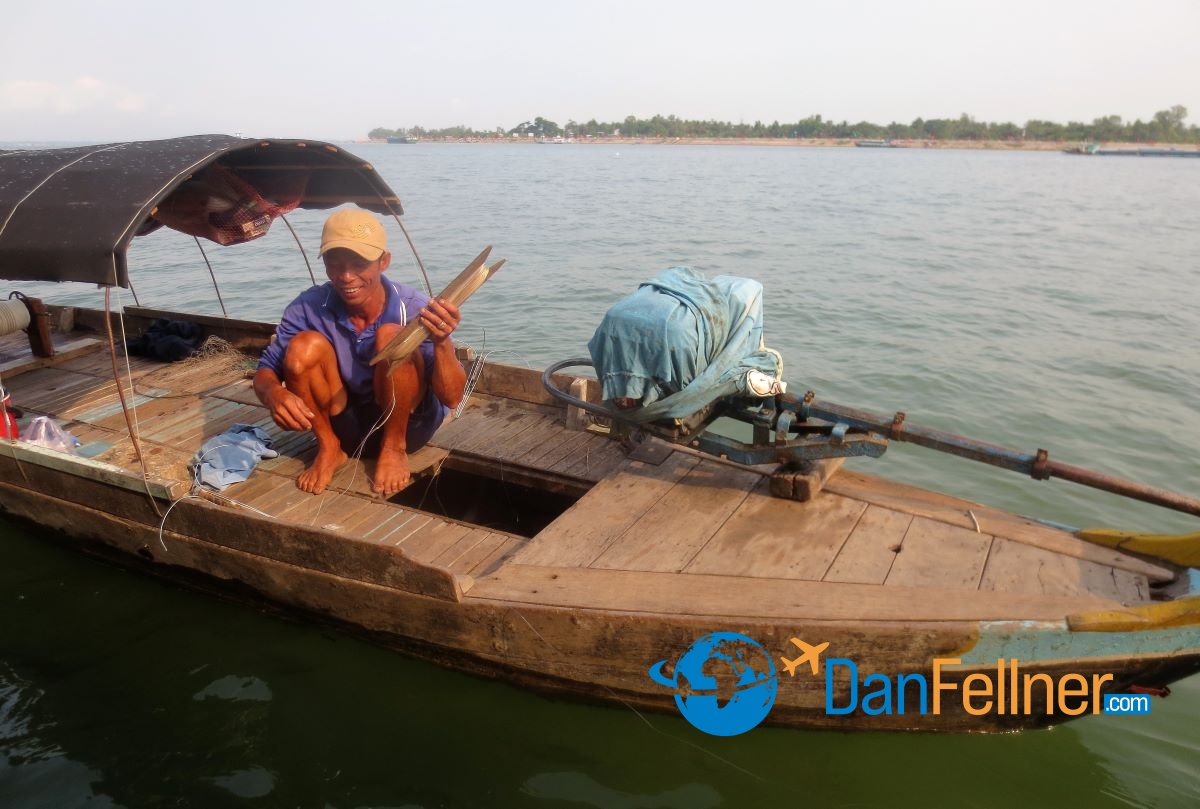
A fisherman on the Mekong River in Vietnam.
In fact, one of our Scenic guides, Mao (nicknamed “The Chairman,”) had spent six years himself as a monk and offered our group unique insights into the faith and the integral role it plays in Cambodians’ lives.
At the monastery, we sat on the floor of a temple for a private blessing as two monks wearing traditional saffron robes chanted Buddhist prayers and tossed jasmine flower petals at us (see video shot by the author: Buddhist monks chant blessing).
We also visited a monastery on a hilltop overlooking the Mekong called Wat Hanchey, home to novice monks, most of whom are teenagers.
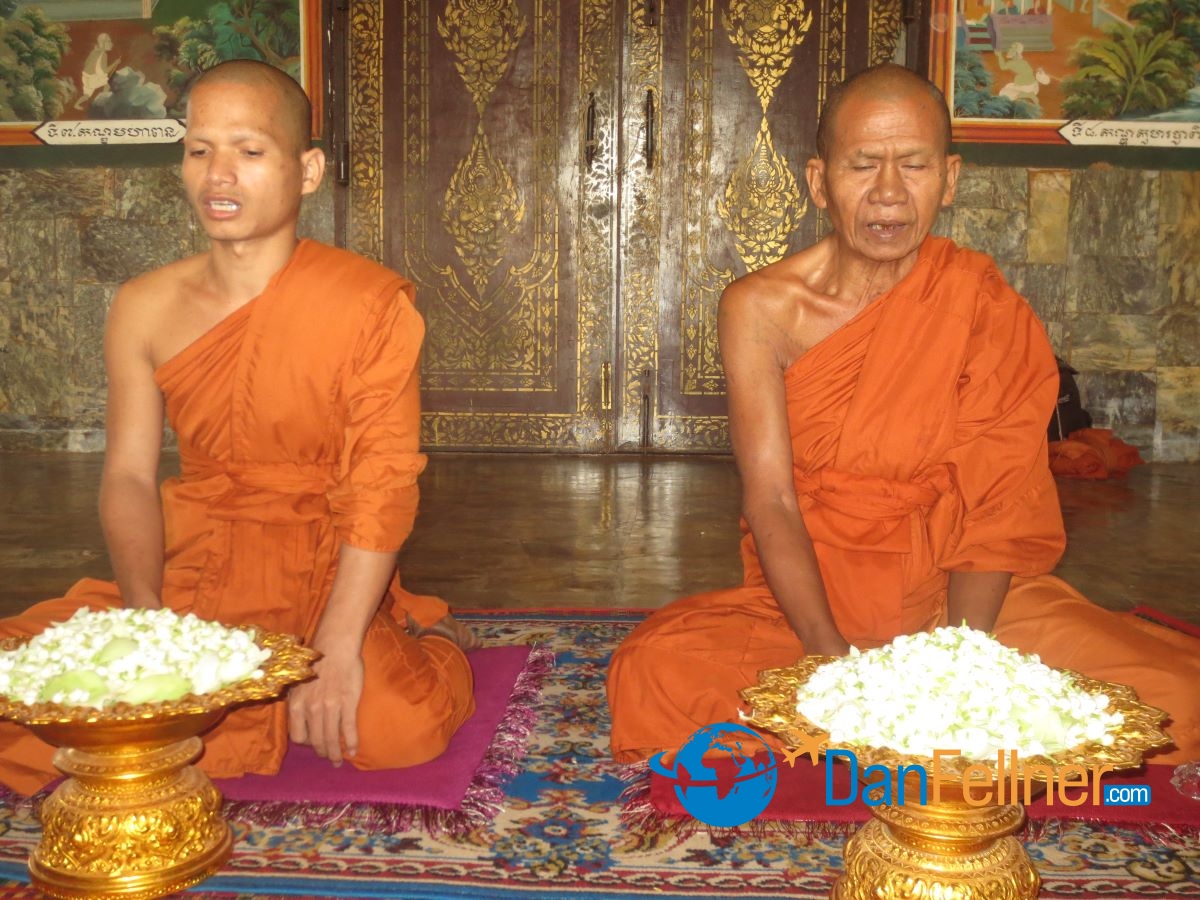
Monks chant a blessing at the Oudong Monastery in Cambodia.
The Mekong is ideal for travelers looking for a less-crowded, more authentic experience than is found on many other river cruises. This year just 19 ships catering to foreign tourists are cruising the river; most hold well fewer than 100 passengers.
As for the tarantula, I survived without even a hint of a stomach ache.
More importantly, after a week on the Mekong, I’ve had a memorable taste of rural life in a culture so remarkably different from our own.
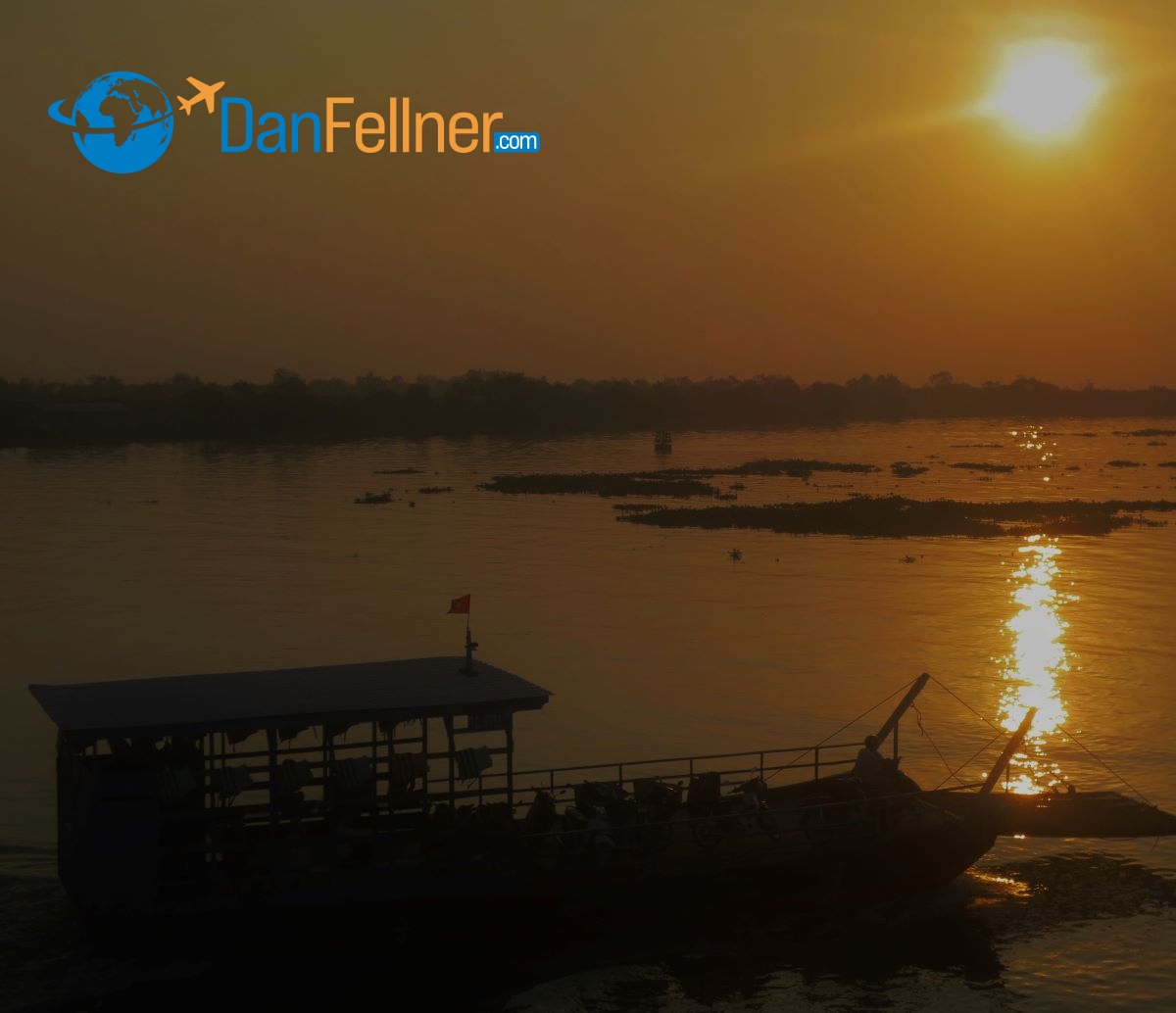
Sunrise on the Mekong River in Vietnam.
© 2018 Dan Fellner



